Seed Spotlight
From crunchy mung beans to vibrant radish microgreens, each seed has its own flavor, grow time, and benefits. Whether you're sprouting in a jar or growing a lush tray of microgreens, this guide will help you choose the best varieties for your taste, routine, and goals. Let’s dig into the most popular seeds and what makes each one unique.
Alfalfa
Learn More
Alfalfa

🌱 Alfalfa Sprouts
Flavor:
Mild, nutty, and slightly sweet with a crisp texture. Often used to add a fresh crunch to sandwiches, salads, or wraps.
Grow Time:
✅ Soak: 8–12 hours
✅ Rinse: 2–3 times per day
✅ Harvest: 4–6 days (when tails are 1–2 inches long)
Growing Method:
Sprouted in a jar or sprouter. Needs no soil, light, or fertilizer — just clean water and airflow.
Nutrition Highlights:
• Rich in vitamin K, C, and B6
• High in fiber, folate, and antioxidants
• Supports digestive health, immunity, and skin health
Why It’s Great for Home Growers:
Alfalfa sprouts are a great choice for beginners due to their fast growth and minimal care requirements. They’re nutrient-dense and versatile for various dishes.
🌿 Alfalfa Microgreens
Flavor:
Mild, earthy, and slightly peppery with a tender texture. They have a more intense flavor compared to sprouts, perfect for adding flavor to salads, sandwiches, or soups.
Grow Time:
✅ Soak (optional): 6–8 hours
✅ Germination (dark): 2–3 days
✅ Light phase: 4–5 days
✅ Harvest: 7–10 days (when first true leaves appear)
Growing Method:
Grown in a tray with soil or grow mat, with indirect sunlight or a grow light once germinated.
Nutrition Highlights:
• Rich in vitamins A, C, and K
• High in folate and antioxidants
• Contains chlorophyll and digestive enzymes
Why It’s Great for Home Growers:
Alfalfa microgreens are easy to grow and add a burst of nutrients to your meals. They are especially great for home growers looking for a nutrient-packed addition to their diet.
Amaranth
Learn More
Amaranth
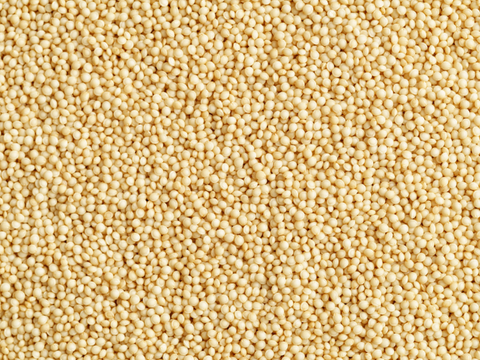
🌱 Amaranth Sprouts
Flavor:
Mild and earthy with a subtle sweetness. These delicate sprouts add a gentle crunch to salads, sandwiches, and wraps without overpowering other flavors.
Grow Time:
✅ Soak: 4–6 hours
✅ Rinse: 2–3 times per day
✅ Harvest: In 2–4 days (when sprouts are about 1–2 inches long)
Growing Method:
Sprouted in a jar or sprouting tray without soil. Requires no light—just clean water, proper drainage, and airflow.
Nutrition Highlights:
- Rich in vitamins A, C, and E
- Contains essential minerals like calcium, iron, magnesium, and potassium
- High in antioxidants and dietary fiber
- Gluten-free and a good source of plant-based protein
Why It’s Great for Home Growers:
Amaranth sprouts are quick to grow and require minimal space and equipment. Their vibrant color and nutritional profile make them an excellent addition to a homegrown diet.
🌿 Amaranth Microgreens
Flavor:
Mild, earthy, and slightly sweet with a tender texture. Their striking red and purple hues make them a visually appealing garnish for various dishes.
Grow Time:
✅ Soak (optional): Not necessary
✅ Germination (dark): 2–3 days
✅ Light phase: 5–7 days
✅ Harvest: 7–10 days (when first true leaves appear)
Growing Method:
Grown in a shallow tray with soil or a grow mat. Requires indirect sunlight or a grow light after germination. Keep the growing medium consistently moist.Better Homes & Gardens
Nutrition Highlights:
- High in vitamins A, C, and E
- Contains minerals such as calcium, iron, magnesium, and potassium
- Rich in antioxidants and dietary fiber
- Gluten-free and a good source of plant-based protein
Why It’s Great for Home Growers:
Amaranth microgreens are easy to cultivate indoors and add both color and nutrition to meals. Their rapid growth and minimal space requirements make them ideal for urban gardening.
Arugula
Learn More
Arugula
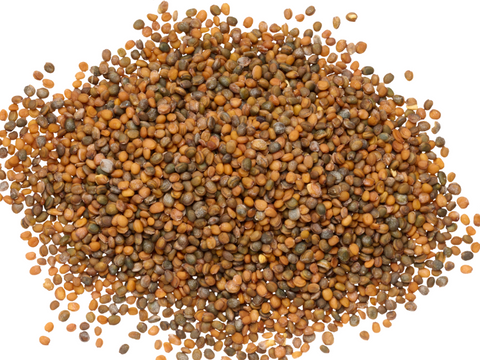
🌱 Arugula Sprouts
Flavor:
Bold, peppery, and tangy — just like mature arugula, but in a tiny package. These sprouts add a zesty kick to sandwiches, wraps, and savory dishes.
Grow Time:
✅ Soak: Do not soak (arugula seeds become gelatinous)
✅ Rinse: Mist lightly 2–3 times per day
✅ Harvest: In 4–6 days (when sprouts are 1–2 inches long)
Growing Method:
Best grown on a sprouting tray or hemp mat. Avoid jars due to mucilaginous (gel-like) seeds. Needs airflow and light misting, but no direct sunlight.
Nutrition Highlights:
- Rich in vitamin K, A, and C
- Contains glucosinolates (support detox pathways)
- High in antioxidants and chlorophyll
- Supports heart and bone health
Why It’s Great for Home Growers:
Arugula sprouts pack intense flavor in a small grow — great for people who want strong-tasting greens fast. They're easy to grow if you avoid soaking and use proper trays for mucilaginous seeds.
🌿 Arugula Microgreens
Flavor:
Zesty, spicy, and slightly mustardy. A favorite for adding sharp, gourmet flavor to eggs, pizzas, salads, and flatbreads.
Grow Time:
✅ Soak (optional): Do not soak
✅ Germination (dark): 2–3 days
✅ Light phase: 4–6 days
✅ Harvest: 7–10 days (when true leaves develop)
Growing Method:
Grown in shallow trays with soil or a grow mat. Requires good drainage and indirect sunlight or grow lights. Mist carefully to prevent damping off.
Nutrition Highlights:
- High in vitamin K, A, C
- Packed with antioxidants and anti-inflammatory compounds
- Contains glucosinolates
- May support digestion and liver detox
Why It’s Great for Home Growers:
Arugula microgreens are fast, bold, and beautiful — with lush green leaves and a punchy taste. A top choice for flavor-lovers who want to grow something exciting and nutritious in small space
Broccoli
Learn More
Broccoli

🌱 Broccoli Sprouts
Flavor:
Mild, slightly peppery, and crisp — often compared to radish, but more subtle. Perfect for adding a fresh bite to sandwiches, salads, or smoothies.
Grow Time:
✅ Soak: 8–12 hours
✅ Rinse: 2–3 times per day
✅ Harvest: In 3–5 days (when tails are ~1 inch long)
Growing Method:
Sprouted in a jar, sprouting tray, or sprouter. Requires no soil and no light — just clean water and airflow.
Nutrition Highlights:
sulforaphane, a compound shown to support detoxification, immune health, and inflammation response
vitamin C, fiber, and antioxidants
Why It’s Great for Home Growers:
Broccoli sprouts are one of the easiest and most powerful superfoods you can grow at home with minimal space or effort. They’re beginner-friendly, fast-growing, and deliver serious health benefits in just a few days.
🌿 Broccoli Microgreens
Flavor:
Mild, sweet, and slightly earthy with a gentle crunch. Less peppery than radish and more “green” than the sprouted version — perfect for topping bowls, wraps, eggs, and avocado toast.
Grow Time:
✅ Soak (optional): 4–6 hours
✅ Germination (dark): 2–3 days
✅ Light phase: 4–6 days
✅ Harvest: 7–10 days (when first true leaves appear)
Growing Method:
Grown in a tray with soil, coco coir, or a grow mat. Needs indirect sunlight or a grow light once germinated.
Nutrition Highlights:
many of the same benefits as broccoli sprouts, though typically in slightly lower concentration per gram
vitamin K, vitamin A, and chlorophyll
digestive enzymes and antioxidants
Why It’s Great for Home Growers:
Broccoli microgreens are beautiful, nutritious, and easy to grow on a windowsill. They’re perfect for people who want to grow something a little more “garden-like” than sprouts, and they add both nutrition and elegance to meals.
✅ Summary
AspectBroccoli SproutsBroccoli MicrogreensGrow Time3–5 days7–10 daysFlavorMild, peppery, crispMild, sweet, tenderGrow MethodJar or sprouting trayTray with light + mediumNutrition HighlightHigh in sulforaphaneRich in vitamins & enzymesLight Needed?❌ No✅ Yes (after germination)
Cabbage
Learn More
Cabbage

🌱 Cabbage Sprouts
Flavor:
Mild, slightly sweet with a hint of earthy cabbage flavor. Great for light crunch in salads, wraps, and rice bowls.
Grow Time:
✅ Soak: 6–8 hours
✅ Rinse: 2–3 times per day
✅ Harvest: In 3–5 days (when tails are ~1 inch)
Growing Method:
Sprouted in a jar or sprouting tray. No soil or light needed — just clean water and airflow.
Nutrition Highlights:
- High in vitamin C and K
- Rich in sulforaphane (supports detox & immune health)
- Contains fiber and plant compounds for gut health
Why It’s Great for Home Growers:
Fast-growing and super nutritious, cabbage sprouts are easy for beginners and add a gentle sweetness and crunch to meals.
🌿 Cabbage Microgreens
Flavor:
Mild, sweet, and grassy — similar to baby cabbage or broccoli. A great all-around microgreen for nearly any dish.
Grow Time:
✅ Soak (optional): 4–6 hours
✅ Germination (dark): 2–3 days
✅ Light phase: 4–6 days
✅ Harvest: 7–10 days
Growing Method:
Grown in trays with soil or coconut coir. Needs indirect sunlight or a grow light once sprouted.
Nutrition Highlights:
- Loaded with vitamins A, C, K
- Contains antioxidants and anthocyanins (especially red varieties)
- Anti-inflammatory and detox-supportive
Why It’s Great for Home Growers:
Colorful, nutritious, and easy to grow — red cabbage microgreens add visual appeal and serious health perks.
Chia
Learn More
Chia

🌱 Chia Sprouts
Flavor:
Mild, slightly nutty, and refreshing with a soft texture. Often added to smoothies, salads, or as a topping for desserts.
Grow Time:
✅ Soak: 6–8 hours
✅ Rinse: 2–3 times per day
✅ Harvest: 4–6 days (when tails are 1–2 inches long)
Growing Method:
Sprouted in a jar or sprouter. Needs no soil, light, or fertilizer.
Nutrition Highlights:
• Rich in omega-3 fatty acids, fiber, and protein
• High in antioxidants, calcium, and magnesium
• Supports heart health, digestion, and skin health
Why It’s Great for Home Growers:
Chia sprouts are easy to grow and require minimal maintenance. They are a great source of plant-based omega-3s and fiber, making them an excellent addition to any diet
🌿 Chia Microgreens
Flavor:
Mild, nutty, and slightly earthy, making them ideal for garnishing or topping dishes like sandwiches, wraps, or bowls.
Grow Time:
✅ Soak (optional): 4–6 hours
✅ Germination (dark): 3–4 days
✅ Light phase: 4–6 days
✅ Harvest: 8–12 days
Growing Method:
Grown in trays with soil, coconut coir, or a grow mat. Needs indirect sunlight or a grow light once sprouted.
Nutrition Highlights:
- High in omega-3s, fiber, and calcium
- Contains antioxidants and magnesium
- Great for digestion and heart health
Why It’s Great for Home Growers:
Chia microgreens are nutrient-packed, easy to grow, and add a subtle nutty flavor to various dishes.
Clover
Learn More
Clover

🌱 Clover Sprouts
Flavor:
Mildly sweet with a slightly peppery finish. They add a light crunch to salads, sandwiches, and wraps.
Grow Time:
✅ Soak: 6–8 hours
✅ Rinse: 2–3 times per day
✅ Harvest: 4–6 days (when tails are 1–2 inches long)
Growing Method:
Sprouted in a jar or sprouter. Requires no soil, light, or fertilizer.
Nutrition Highlights:
• Rich in vitamins A, C, and K
• High in protein, fiber, and iron
• Supports heart and immune health
Why It’s Great for Home Growers:
Clover sprouts are easy to grow, nutrient-dense, and perfect for small spaces. Their mild flavor makes them a versatile addition to many dishes.
🌿 Clover Microgreens
Flavor:
Mild, slightly sweet, and a bit peppery. Ideal for garnishing sandwiches, wraps, or adding a fresh kick to salads.
Grow Time:
✅ Soak (optional): 4–6 hours
✅ Germination (dark): 2–3 days
✅ Light phase: 4–6 days
✅ Harvest: 7–10 days
Growing Method:
Grown in trays with soil or coconut coir. Needs indirect sunlight or a grow light once sprouted.
Nutrition Highlights:
- Rich in vitamin C and folate
- Contains antioxidants and phytonutrients
- Supports immune system and detoxification
Why It’s Great for Home Growers:
Clover microgreens are quick-growing and packed with nutrients, making them an excellent addition to any home garden.
Fenugreek
Learn More
Fenugreek

🌱 Fenugreek Sprouts
Flavor:
Slightly bitter and spicy, with a unique, earthy flavor. Often used in salads, sandwiches, or Indian-inspired dishes.
Grow Time:
✅ Soak: 6–8 hours
✅ Rinse: 2–3 times per day
✅ Harvest: 4–6 days (when tails are 1–2 inches long)
Growing Method:
Sprouted in a jar or sprouter. Needs no soil or light.
Nutrition Highlights:
• Rich in iron, calcium, and magnesium
• High in fiber and protein
• Supports digestion and hormonal balance
Why It’s Great for Home Growers:
Fenugreek sprouts are easy to grow, flavorful, and packed with nutrients, especially for those interested in boosting their metabolism and digestion.
🌿 Fenugreek Microgreens
Flavor:
Mildly bitter with a hint of nutty sweetness, similar to the sprouts but more refined. Perfect for salads, soups, or sandwiches.
Grow Time:
✅ Soak (optional): 4–6 hours
✅ Germination (dark): 3–4 days
✅ Light phase: 4–6 days
✅ Harvest: 8–12 days
Growing Method:
Grown in trays with soil or coconut coir. Needs indirect sunlight or a grow light once sprouted.
Nutrition Highlights:
- High in protein and fiber
- Contains iron, antioxidants, and vitamins A, C, and K
- Supports digestion and blood sugar regulation
Why It’s Great for Home Growers:
Fenugreek microgreens are a nutritious, fast-growing addition to your home garden that can be used in a variety of dishes.
Flax
Learn More
Flax
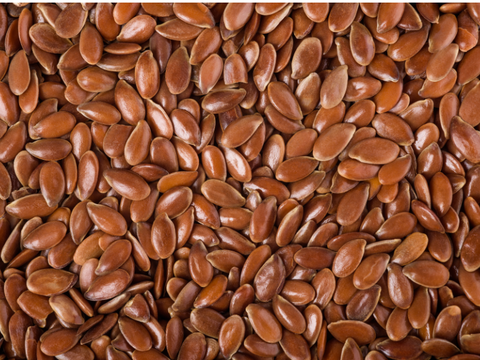
🌱 Flax Sprouts
Flavor:
Mild, slightly nutty, and a bit earthy. Adds a nutritional boost to smoothies, salads, and sandwiches.
Grow Time:
✅ Soak: 6–8 hours
✅ Rinse: 2–3 times per day
✅ Harvest: In 4–6 days (when tails are ~1 inch)
Growing Method:
Sprouted in a jar or sprouting tray. No soil or light required — just water and airflow.
Nutrition Highlights:
- High in omega-3 fatty acids and fiber
- Supports heart health and digestion
- Contains antioxidants and lignans
Why It’s Great for Home Growers:
Flax sprouts are rich in healthy fats and fiber, easy to grow, and perfect for boosting the nutritional value of your meals.
🌿 Flax Microgreens
Flavor:
Mild, nutty, and earthy. Great for sprinkling over salads, bowls, or as a garnish for various dishes.
Grow Time:
✅ Soak (optional): 4–6 hours
✅ Germination (dark): 3–4 days
✅ Light phase: 4–6 days
✅ Harvest: 8–12 days
Growing Method:
Grown in trays with soil, coconut coir, or a grow mat. Needs indirect sunlight or a grow light once sprouted.
Nutrition Highlights:
- High in omega-3s, antioxidants, and fiber
- Contains lignans that support heart and hormonal health
- Supports digestion and reduces inflammation
Why It’s Great for Home Growers:
Flax microgreens are nutrient-dense and simple to grow, making them a fantastic choice for home gardeners seeking a healthy boost.
Lentil
Learn More
Lentil

🌱 Lentil Sprouts
Flavor:
Mild, slightly nutty, and earthy. Great for adding crunch to salads, wraps, and sandwiches.
Grow Time:
✅ Soak: 8–12 hours
✅ Rinse: 2–3 times per day
✅ Harvest: In 4–6 days (when tails are ~1 inch)
Growing Method:
Sprouted in a jar or sprouting tray. No soil or light needed — just water and airflow.
Nutrition Highlights:
- High in protein, iron, and fiber
- Supports heart health and digestion
- Contains antioxidants and essential minerals
Why It’s Great for Home Growers:
Lentil sprouts are nutrient-packed, fast-growing, and easy to sprout, making them a great choice for beginners looking to boost their diet with plant-based protein.
🌿 Lentil Microgreens
Flavor:
Mild, earthy, and nutty with a slight crunch. Perfect for topping salads, soups, or sandwiches.
Grow Time:
✅ Soak (optional): 4–6 hours
✅ Germination (dark): 2–3 days
✅ Light phase: 4–6 days
✅ Harvest: 7–10 days
Growing Method:
Grown in trays with soil, coconut coir, or a grow mat. Needs indirect sunlight or a grow light once sprouted.
Nutrition Highlights:
- High in protein, fiber, and vitamins A, C, and K
- Rich in antioxidants
- Supports heart health and digestive function
Why It’s Great for Home Growers:
Lentil microgreens are quick to grow, full of plant-based protein, and easy to incorporate into a variety of meals for added nutrition.
Mung
Learn More
Mung

🌱 Mung Bean Sprouts
Flavor:
Mild, fresh, and crunchy with a slight sweetness. Ideal in stir-fries, salads, and soups.
Grow Time:
✅ Soak: 8–12 hours
✅ Rinse: 2–3 times per day
✅ Harvest: In 4–6 days (when tails are ~1 inch)
Growing Method:
Sprouted in a jar or sprouting tray. No soil or light needed — just water and airflow.
Nutrition Highlights:
- High in protein, fiber, and B vitamins
- Supports digestive health and immune function
- Rich in antioxidants and minerals
Why It’s Great for Home Growers:
Mung bean sprouts are easy to grow, full of protein and nutrients, and make a perfect addition to a variety of dishes.
🌿 Mung Bean Microgreens
Flavor:
Mild and slightly nutty with a fresh crunch. A great addition to sandwiches, wraps, and salads.
Grow Time:
✅ Soak (optional): 4–6 hours
✅ Germination (dark): 2–3 days
✅ Light phase: 4–6 days
✅ Harvest: 7–10 days
Growing Method:
Grown in trays with soil, coconut coir, or a grow mat. Needs indirect sunlight or a grow light once sprouted.
Nutrition Highlights:
- High in protein, fiber, and vitamins
- Rich in antioxidants and minerals
- Supports digestion and heart health
Why It’s Great for Home Growers:
Mung bean microgreens are easy to grow and full of nutrients, making them a great choice for home gardeners looking for a quick and healthy harvest.
Mustard
Learn More
Mustard
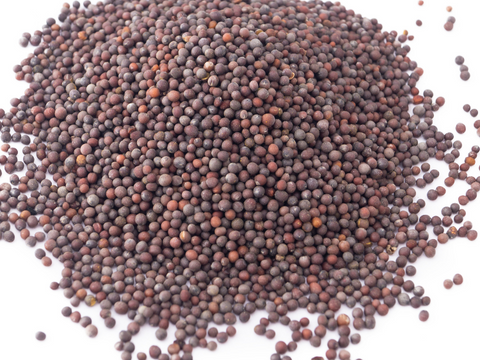
🌱 Mustard Sprouts
Flavor:
Spicy, peppery, and a little bit tangy. Perfect for adding zest to salads, sandwiches, and wraps.
Grow Time:
✅ Soak: 8–12 hours
✅ Rinse: 2–3 times per day
✅ Harvest: In 4–6 days (when tails are ~1 inch)
Growing Method:
Sprouted in a jar or sprouting tray. No soil or light needed — just water and airflow.
Nutrition Highlights:
- Rich in vitamin C, A, and K
- Contains antioxidants, sulforaphane, and fiber
- Supports immune health and detox
Why It’s Great for Home Growers:
Mustard sprouts are easy to grow and bring a spicy, bold flavor to meals. They’re also packed with nutrients and perfect for those new to sprouting.
🌿 Mustard Microgreens
Flavor:
Spicy, peppery, and mustard-like, providing a sharp flavor boost to dishes like sandwiches, wraps, and salads.
Grow Time:
✅ Soak (optional): 4–6 hours
✅ Germination (dark): 2–3 days
✅ Light phase: 4–6 days
✅ Harvest: 7–10 days
Growing Method:
Grown in trays with soil or coconut coir. Needs indirect sunlight or a grow light once sprouted.
Nutrition Highlights:
- High in vitamins A, C, and K
- Contains antioxidants and sulfur compounds (e.g., sulforaphane)
- Supports detoxification and immunity
Why It’s Great for Home Growers:
Mustard microgreens are fast-growing, spicy, and full of vitamins and antioxidants, making them a fantastic addition to your home garden.
Oat
Learn More
Oat
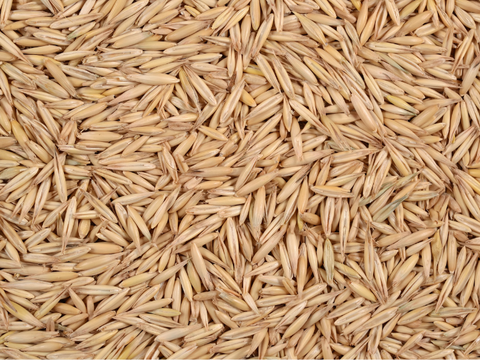
🌱 Oat Sprouts
Flavor:
Mild, slightly sweet, and nutty. Perfect for adding texture to smoothies, cereals, or baked goods.
Grow Time:
✅ Soak: 8–12 hours
✅ Rinse: 2–3 times per day
✅ Harvest: In 4–6 days (when tails are ~1 inch)
Growing Method:
Sprouted in a jar or sprouting tray. No soil or light needed — just water and airflow.
Nutrition Highlights:
- Rich in fiber, protein, and vitamins B1 and E
- Supports heart health and digestion
- Contains antioxidants and healthy fats
Why It’s Great for Home Growers:
Oat sprouts are nutrient-dense and easy to grow, offering a mild flavor and nutritional boost to your meals.
🌿 Oat Microgreens
Flavor:
Mild, sweet, and nutty with a tender crunch. Great for sprinkling over salads, soups, or using as a garnish.
Grow Time:
✅ Soak (optional): 4–6 hours
✅ Germination (dark): 3–4 days
✅ Light phase: 4–6 days
✅ Harvest: 7–10 days
Growing Method:
Grown in trays with soil, coconut coir, or a grow mat. Needs indirect sunlight or a grow light once sprouted.
Nutrition Highlights:
- High in fiber, protein, and B vitamins
- Contains antioxidants and healthy fats
- Supports heart health and digestion
Why It’s Great for Home Growers:
Oat microgreens are a nutritious, easy-to-grow option that adds both flavor and texture to a wide range of dishes.
Pea
Learn More
Pea
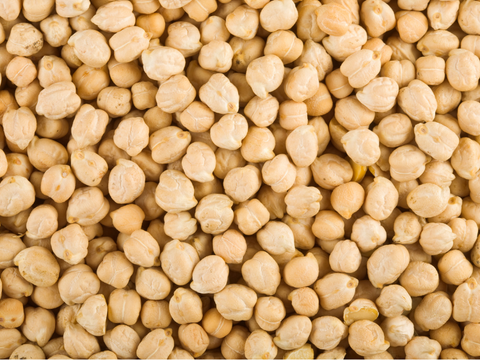
🌱 Pea Sprouts
Flavor:
Sweet, mild, and slightly grassy. Ideal for adding a fresh crunch to salads, wraps, and stir-fries.
Grow Time:
✅ Soak: 8–12 hours
✅ Rinse: 2–3 times per day
✅ Harvest: In 4–6 days (when tails are ~1 inch)
Growing Method:
Sprouted in a jar or sprouting tray. No soil or light needed — just water and airflow.
Nutrition Highlights:
- High in protein, fiber, and vitamins A, C, and K
- Rich in antioxidants and minerals
- Supports digestion and heart health
Why It’s Great for Home Growers:
Pea sprouts are fast-growing and easy to sprout, packed with vitamins and minerals, and a great addition to any dish for a mild, sweet flavor.
🌿 Pea Microgreens
Flavor:
Mild, sweet, and slightly nutty, offering a crisp texture. Perfect for adding to salads, sandwiches, or as a garnish.
Grow Time:
✅ Soak (optional): 4–6 hours
✅ Germination (dark): 2–3 days
✅ Light phase: 4–6 days
✅ Harvest: 7–10 days
Growing Method:
Grown in trays with soil or coconut coir. Needs indirect sunlight or a grow light once sprouted.
Nutrition Highlights:
- High in vitamins A, C, K, and folate
- Contains antioxidants and protein
- Supports heart health and digestion
Why It’s Great for Home Growers:
Pea microgreens are packed with vitamins and easy to grow, providing a mild, sweet flavor that enhances a variety of dishes.
Radish
Learn More
Radish
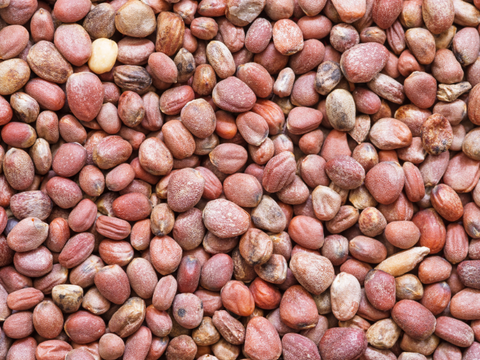
🌱 Radish Sprouts
Flavor:
Spicy, peppery, and tangy, similar to mature radishes. Great for adding a kick to sandwiches, salads, and wraps.
Grow Time:
✅ Soak: 6–8 hours
✅ Rinse: 2–3 times per day
✅ Harvest: In 3–5 days (when tails are ~1 inch)
Growing Method:
Sprouted in a jar or sprouting tray. No soil or light needed — just water and airflow.
Nutrition Highlights:
- High in vitamins A, C, and K
- Contains antioxidants, fiber, and sulforaphane
- Supports digestion and detox
Why It’s Great for Home Growers:
Radish sprouts grow quickly and add a spicy, zesty flavor to meals, along with a range of health benefits.
🌿 Radish Microgreens
Flavor:
Peppery, spicy, and bold. Perfect for adding heat and flavor to sandwiches, wraps, and salads.
Grow Time:
✅ Soak (optional): 4–6 hours
✅ Germination (dark): 2–3 days
✅ Light phase: 4–6 days
✅ Harvest: 7–10 days
Growing Method:
Grown in trays with soil, coconut coir, or a grow mat. Needs indirect sunlight or a grow light once sprouted.
Nutrition Highlights:
- High in vitamins A, C, K, and folate
- Rich in antioxidants and fiber
- Supports immune health and digestion
Why It’s Great for Home Growers:
Radish microgreens are fast-growing, nutrient-packed, and full of flavor, making them a perfect choice for beginner gardeners.
Sunflower
Learn More
Sunflower

🌱 Sunflower Sprouts
Flavor:
Mild, slightly nutty, and earthy with a tender crunch. Great for adding texture to salads, wraps, and sandwiches.
Grow Time:
✅ Soak: 8–12 hours
✅ Rinse: 2–3 times per day
✅ Harvest: In 5–7 days (when tails are ~1 inch)
Growing Method:
Sprouted in a jar or sprouting tray. No soil or light needed — just water and airflow.
Nutrition Highlights:
- High in protein, vitamins E and B, and fiber
- Contains healthy fats and antioxidants
- Supports heart health and skin health
Why It’s Great for Home Growers:
Sunflower sprouts are quick to grow, nutrient-dense, and full of flavor, making them an easy and healthy addition to a variety of meals.
🌿 Sunflower Microgreens
Flavor:
Mildly nutty, slightly sweet, and tender with a bit of crunch. Perfect for garnishing salads, soups, and sandwiches.
Grow Time:
✅ Soak (optional): 6–8 hours
✅ Germination (dark): 3–4 days
✅ Light phase: 4–6 days
✅ Harvest: 7–10 days
Growing Method:
Grown in trays with soil, coconut coir, or a grow mat. Needs indirect sunlight or a grow light once sprouted.
Nutrition Highlights:
- High in vitamins E and B, protein, and fiber
- Contains healthy fats, antioxidants, and minerals
- Supports heart health, skin, and energy levels
Why It’s Great for Home Growers:
Sunflower microgreens are easy to grow, rich in nutrients, and add a nutty flavor to dishes, making them a great choice for home gardeners.
Watercress
Learn More
Watercress
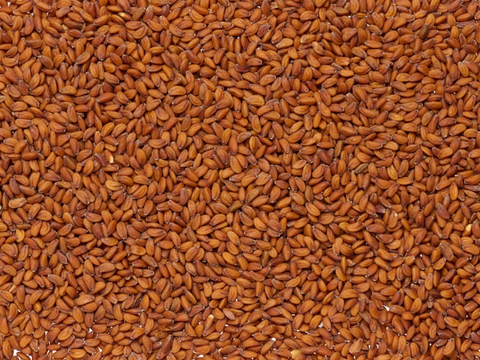
🌱 Watercress Sprouts
Flavor:
Peppery, slightly bitter, and fresh. Ideal for adding a zing to salads, sandwiches, and soups.
Grow Time:
✅ Soak: 8–12 hours
✅ Rinse: 2–3 times per day
✅ Harvest: In 4–6 days (when tails are ~1 inch)
Growing Method:
Sprouted in a jar or sprouting tray. No soil or light needed — just water and airflow.
Nutrition Highlights:
- Rich in vitamins A, C, and K
- High in antioxidants and fiber
- Supports immune function and detoxification
Why It’s Great for Home Growers:
Watercress sprouts are fast-growing, flavorful, and packed with nutrients, perfect for boosting the nutritional value of your meals.
🌿 Watercress Microgreens
Flavor:
Peppery, tangy, and fresh. Great for adding a zesty kick to salads, sandwiches, and garnishes.
Grow Time:
✅ Soak (optional): 4–6 hours
✅ Germination (dark): 2–3 days
✅ Light phase: 4–6 days
✅ Harvest: 7–10 days
Growing Method:
Grown in trays with soil, coconut coir, or a grow mat. Needs indirect sunlight or a grow light once sprouted.
Nutrition Highlights:
- High in vitamins A, C, and K
- Contains antioxidants and fiber
- Supports digestion, detox, and immune health
Why It’s Great for Home Growers:
Watercress microgreens are easy to grow, nutrient-rich, and add a bold flavor to dishes, making them a perfect choice for home gardeners looking for a quick and healthy crop.
Wheat
Learn More
Wheat

🌱 Wheat Sprouts
Flavor:
Grassy, fresh, and slightly sweet. Perfect for adding to smoothies, juices, and salads.
Grow Time:
✅ Soak: 8–12 hours
✅ Rinse: 2–3 times per day
✅ Harvest: In 4–6 days (when tails are ~1 inch)
Growing Method:
Sprouted in a jar or sprouting tray. No soil or light needed — just water and airflow.
Nutrition Highlights:
- Rich in vitamins A, C, E, and K
- High in antioxidants, chlorophyll, and fiber
- Supports detox, immune health, and digestion
Why It’s Great for Home Growers:
Wheat sprouts are easy to grow, full of nutrients, and perfect for adding a healthy boost to drinks and dishes.
🌿 Wheat Microgreens
Flavor:
Grassy, fresh, and slightly sweet with a tender crunch. Great for adding a green boost to smoothies, salads, and juices.
Grow Time:
✅ Soak (optional): 4–6 hours
✅ Germination (dark): 3–4 days
✅ Light phase: 4–6 days
✅ Harvest: 7–10 days
Growing Method:
Grown in trays with soil, coconut coir, or a grow mat. Needs indirect sunlight or a grow light once sprouted.
Nutrition Highlights:
- High in vitamins A, C, E, and K
- Contains chlorophyll, antioxidants, and fiber
- Supports detoxification, immune health, and digestion
Why It’s Great for Home Growers:
Wheat microgreens are easy to grow and packed with nutrients, making them an ideal addition to a health-conscious home garden.
Why do you need to rinse sprouts 2 -3 times a day?
Learn More
Why do you need to rinse sprouts 2 -3 times a day?
Rinsing your sprouts 2–3 times a day is the secret to growing fresh, crisp, and safe superfoods at home! Here’s why it’s so important:
✅ Keeps Sprouts Fresh & Hydrated – Since sprouts don’t grow in soil, they need regular moisture to thrive. Rinsing prevents them from drying out and ensures steady growth.
✅ Prevents Mold & Bacteria – A warm, damp environment can lead to unwanted bacteria or mold. Rinsing flushes out impurities and keeps your sprouts fresh and safe to eat.
✅ Boosts Oxygen Flow – Water carries oxygen to your sprouts, helping them grow strong and healthy. Rinsing refreshes the oxygen supply for faster, better sprouting!
✅ Removes Natural Seed Coatings – Some seeds have enzyme inhibitors or bitter coatings that need to be washed away. Rinsing improves flavor and digestibility.
Tip: Always drain well after rinsing to keep your sprouts crisp, not soggy!
Enjoy fresh, homegrown superfoods in just a few days—happy sprouting!






